By John Y. Brown III, on Tue Sep 30, 2014 at 12:00 PM ET  Tonight for the first time in my life –and at the considerable age of 51 — I bought and used “Product.” Tonight for the first time in my life –and at the considerable age of 51 — I bought and used “Product.”
For my hair.
The friendly and talkative hair stylist kept asking me what kind of “product” I used and I politely explained I had never used product before and wouldn’t need any, thank you.
But she persisted.
Finally, she had me pull out my phone and Google Patrick Dempsey (who is an actor and plays a character named Dr McDreamy in Grey’s Anatomy) and told me that with the right product I could look like him.
“His hair,” she clarified.
That was good enough for me.
So tonight I look like a doctor. Who doesn’t look like Patrick Demspsey. But who does look like he uses hair product.
By Erica and Matt Chua, on Tue Sep 30, 2014 at 8:30 AM ET I had only one goal for India: survive. Hours after I wanted to be in a hospital, between gasps for air, I wondered if my goal of survival was too ambitious. The trip between Agra and Varanasi started well enough. We had reserved beds in an air conditioned sleeper car, complete with fresh linen that was Four Seasons compared to our crowded and sweaty, jail-like experience in General Seating. Shortly after laying down to sleep though the ride took a turn for the worst: I was struggling to breathe.
.
To put it gently, I have terrible allergies. One could say I’m allergic to life, but that would be an understatement, I’m allergic to dead and inanimate objects as well. Luckily my allergies are manageable: avoid horses, animal pens, and untidy, pet infested homes. If exposed to such situations my body floods my head with mucus, constricts my airways, and, in extreme circumstances, makes my whole body break itch. Overall, my allergies can quickly create an uncomfortable situation.
.
Only four times in my life have I actually considered that my body could suffocate itself. The previous times I had access to medical attention. This time I was out of bullets, I tried everything I was carrying to no avail; I needed medical attention and I needed it now. I didn’t know where the train was, where I could get help, or at what point barely breathing would become not breathing. It was during this crises that I realized I was not carrying the right medicine to deal with such situations.
.
As soon as LOCAVORista awoke she began peppering me with questions about my obvious issue. I tried to ease her concerns, but it was hard to hide my condition. The train was moving too slowly, minutes felt like hours and I wasn’t getting better. Finally I admitted: I need to go to the hospital.
.
After finally arriving in Varanasi and surviving past dozens of hotel touts we arranged a rickshaw to a private hospital. I was quickly seated with a physician that had a US medical degree on the wall. He was convinced I needed to spend a night in the hospital, have a chest x-ray, and get a cortisol shot. Accepting that I would only spend a night in an Indian hospital if I were severely bleeding or unconscious, he finally wrote orders for me to receive nebulization. My 12 hour ordeal came to an end after 10 minutes on the magical machine.
.
This situation made me reassess what I carry to fight my allergies. Previously I carried an arsenal against allergies in general, but nothing to deal with an emergency. Allergies are uncomfortable, but a breathing emergency can kill. I didn’t worry about emergencies at home as medical treatments are always near; while traveling, help may not be available when it’s needed most.
.
Due to this experience I re-evaluated what I’m carrying, specifically adding Prednisone for emergencies. This deals with my specific condition, for others though carrying an EPI-Pen may save their lives. Below is a list of the things that I carry to deal with allergies and allergy-induced asthma. Obviously you should consult a specialized physician who knows your specific conditions before setting off.
.
- Fexofenadine HCL (brandname Allegra or Telfast). This is my stalwart against general allergies and available inexpensively, over-the-counter, globally.
- Diphenhydramine (brandname Benadryl). This is the ultimate over-the-counter allergy stopper. The problem is that it knocks me out, one to two pills of this over a 12 hour period and my allergies are gone; but I will be sleeping for that entire period. When things go bad this clears my system.
- Albuterol Inhaler–PRESCRIPTION ONLY (brandname Ventolin). This is an emergency inhaler that helps me breathe when allergies are overcoming me.
- Flovent Inhaler–PRESCRIPTION ONLY (no generic at this time). This is a “daily use” corticosteroids inhaler that I use when I’ve been having extended breathing issues (multiple days). I use it until I feel confident that whatever has been aggravating my allergies is gone.
- Prednisone-PRESCRIPTION ONLY. I was not carrying this at the time of my asthma attack on the Indian train, but should have been. For an allergy induced asthma attack this is a literal lifesaver. I won’t travel the third world without it again.
.
Do you travel with medical conditions? How do you deal with emergencies when you are far from professional assistance?
By Jonathan Miller, on Mon Sep 29, 2014 at 4:02 PM ET The RP joined NPR’s “To the Point” today to talk about the upcoming national elections, with a focus on the Grimes/McConnell battle, and the unusual relationship between the Bluegrass State’s two Senators.
Enjoy.
By David Goldberg, on Mon Sep 29, 2014 at 1:30 PM ET “It was twenty (five) years ago today, Sgt. Pepper taught the band to play. They’ve been going in and out of style, but they’re guaranteed to make you smile.”
– Sgt. Pepper’s Lonely Hearts Club Band, The Beatles
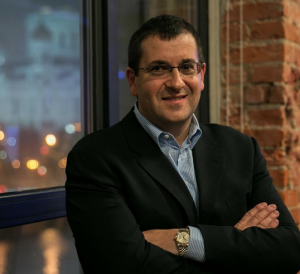 Every day, one survey or another informs us about the attitudes and intentions of a particular group of people. Once in a while, a survey also offers up life lessons. Every day, one survey or another informs us about the attitudes and intentions of a particular group of people. Once in a while, a survey also offers up life lessons.
That was the case with an interesting survey that I and 434 other members of the Harvard Class of 1989 completed this summer. Some of the results are merely statistical. For instance, most class members majored in history, economics, and English. Most ended up in education, healthcare, business, finance, and law. Us pre-Internet grads? We’re now big users of Facebook, LinkedIn, and Twitter.
Other findings are more telling. Just over 10% say they need either more love or sex. However, a whopping 34% say they need more sleep—perhaps a lesson in how our priorities change after college! Surprisingly more than 40% of our class declared they took too little risk. Only 4% say they took too much. It was unexpected to see so few of us feel we’d taken enough risks along the way.
The most compelling insights came from an open-ended question. Here it is and a sample of the responses:
“If you could travel back to 1989 and explain your last 25 years to your younger self, what would that graduating senior have found most surprising?”
- You need to listen more.
- How hard it is to juggle work and family.
- Being gay does not hinder your life.
- The role luck plays in both good and bad life outcomes.
- That choosing a single career might not be enough—having two or three options ready would have been smarter.
- I have done none of the things that I considered likely that I would do.
- The fear of failure is far, far worse than the actual experience of it.
- How hard it is to settle on a satisfying career. Take time to explore.
- Home, family, and relationships trump career.
- The dramatic change technology played.
- How profound an experience it is to have and raise children.
- That the Red Sox have won the World Series three times.
Great responses. Some were funny. Some were serious. All were revealing. The answers show that at our 25th reunion, we are students of life. What we’d tell our younger self shows that as much time as we spend hitting the books or burning the midnight oil — or worrying about our future — the real lessons about who we are and what’s important happen after school and work. So get out. Live a little. Take it all in. Survey says you’ll learn more than you expect.
By John Y. Brown III, on Mon Sep 29, 2014 at 12:00 PM ET  1) Childhood — “Welcome to my world, everyone else is just living in it.” 1) Childhood — “Welcome to my world, everyone else is just living in it.”
2l Teens — “I can’t believe I have to deal with this lame ass s***”
3) Young adult — “How will I ever find my place in the world –much less take it over?”
4) 30’s — “I think I can….I think I can”
5) 40’s –“It’s Mr Brown to you, son.”
6) Early 50’s — “………….What? Oh. Yeah,, I’m here.”
7) Late 50’s “Well, I may not have become President of the United States but I did make it to director of my division. Not bad. Not bad at all.”
8) 60’s — “Life is good. Not dead yet….hehe”
9) 70’s –“Not dead yet.” (But without the “Hehe”)
10) 80’s and over “Still not dead…but can’t believe that bastard down the street is still alive.”
By Saul Kaplan, on Mon Sep 29, 2014 at 8:30 AM ET We all know the story of the local cobbler who was so busy making shoes for his customers that he didn’t have time to make shoes for his family. I have led and participated in hundreds of organizational visioning sessions but in 1998 it was clear to me that my own family needed a shared vision for the future. I was determined and proclaimed that we would spend New Year’s Eve 1998 together as a family working on our family vision. Under duress my wife and three children amused me and participated. My wife found the actual document I used to facilitate our visioning session in a file. I hadn’t seen it in ten years and the question remains relevant today. Does your family have a shared vision?
Here is the document I used to get us talking as a family ten years ago. Maybe the questions will enable a similar conversation with your family.
Kaplan Family Visioning 12/31/1998
Imagine it is the year 2008. The world survived the dreaded year 2-K disaster and the Kaplan family is thriving in the new millennium. It is hard to imagine that ten years have passed since that silly New Year’s Eve in 1998 when our dad made us stay at home together and develop a family vision. He said it was a mental picture or image of the kind of family we wanted to be. And like any vision it wouldn’t happen by accident but because everyone in our family wanted to achieve it and worked hard to make it happen. Well, ten years have passed. Let’s see how we did in living up to the family vision we created that New Year’s Eve right after dad won the family monopoly game!
Before we can discuss the kind of family we have become in the year 2008 we should start by discussing the kind of individuals we have become. I can’t believe how far we came as individuals. It will help us with our family vision to understand what each of us will be doing in the year 2008. Once we have a picture of ourselves as individuals we can take a look at how we relate together as a family.
How old are you in 2008? Where do you live? What kind of home do you live in?
Are you still in school? What grade (high school, college, graduate school)? Where? What do/did you study? What kind of grades do/did you get?
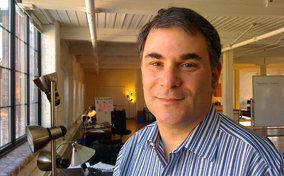 Are you working now? What do you do? What are you planning to do after you graduate? Are you working now? What do you do? What are you planning to do after you graduate?
Describe your personal relationships (boyfriend/ girlfriend)? Husband/wife? Kids! How about friends? Do you have a lot of friends?
What role does music play in your life? Do you play any instruments? How often do you play?
How much traveling have you done? What parts of the world have you seen? What parts do you plan to see?
How much do you read? What do you like to read? Do you read a newspaper every day? (Maybe there won’t be newspapers ten years from now!)
How much do you write? Does your job require you to write? Do you write on your own? What do you like to write about? (your mother has been encouraging me to write more…blame her….she has a habit of encouraging all of us to be better…doesn’t she…I think one of her best traits)
What hobbies/sports are you active in? How active are you? Do you exercise? Maybe we should know how much you weigh! Are you a sports fan? What sports? Have the Red Sox made it to the World Series in the last ten years? Perhaps you live somewhere else and have become a traitor and don’t root for the Red Sox any more!
What are the most important things in your life in 2008?
Now that we can picture what each of us is up to in 2008 and can admire our personal successes we can start to discuss what kind of family we have become.
OK so the Kaplan clan is alive and well in the year 2008. Who would’ve doubted that each of us would have an exciting and positive view of the future? It’s one of the great things about our family….the fact that as individuals we are all smart, funny, ambitious and have a ton of optimism about the future. And of course it is the humor we share with each other which makes for an “interesting” combination with our competitive spirits. I don’t know about you but I am extraordinarily proud and impressed with the individual integrity, talent, and personal motivation that we all possess.
But…(you had to know that there was a but somewhere!) …I am not as clear on what we will be like as a family. What will we be like collectively? That might seem like a corny question to ask and I know you are laughing at me for doing this. I truly believe that what our family is going to be like ten years from now will have a lot to do with the importance we place on being a family and how we treat each other NOW.
Having a vision doesn’t mean you can predict the future. Nobody can do that. It simply means that you have a view of what you would like the future to be like. Once you have a clear vision you can steer yourself toward it. It helps you know every day/month/year if you are doing the things and acting in a way that points in the direction of the vision.
Anyway, here are a few questions to get us thinking about our family vision:
How often do we see each other as a family? Are we together for the holidays? Do we go on vacations together?
What happens when our family gets bigger? Spouses? Are there any nieces and nephews? (I guess they would be grandkids huh? YIKES)
How often do we talk with each other? Do you talk often with your siblings?
What is the nature of our conversation? Are we talking about our lives and what is really going on or are we doing the adult equivalent of NOTHING REALLY!
How about email as an alternative to the phone. Are we all hooked up on line wherever we live?
OK how about something a little tougher….How close are we as a family…..really? What happens if something really great happens for one of us…. Are we all there to help celebrate? I suppose it is fair to ask the opposite question… What happens if someone gets hurt or has something bad happens, or just plain needs our help? Are we all there for each other?
How will we treat each other? Do we respect and love each other? Can other people around us see how much we respect and love each other?
And finally….How much importance do we place on family versus individual? Ultimately the importance we put on it will determine the kind of family we will be in 2008. I am willing to sign up to whatever vision we create and to work hard to make it happen. Are you?
Back to the Future 2009
I cried when I read this, ten years later. Because of its personal poignancy and its accuracy. My family is as close as ever. We communicate incessantly by every electronic means available. We added a new member to our family when my oldest daughter was married this past summer. We just returned from a great family vacation. Newspapers are almost dead and of course the Red Sox have won the World Series, twice. Life is good.
By John Y. Brown III, on Fri Sep 26, 2014 at 12:00 PM ET
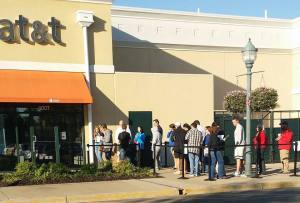 This morning as I left a business meeting I spotted a long snaking line outside an ATT store as people waited for a chance to buy the new iPhone 6. This morning as I left a business meeting I spotted a long snaking line outside an ATT store as people waited for a chance to buy the new iPhone 6.
I self-righteously shook my head and muttered sarcastically to a guy snapping a picture of the line, “Wonder if any of those people would wait in line that long to talk to someone on their new iPhone?” We snickered condescendingly like adolescents and he responded, “Pitiful, isn’t it?” After he stepped aside, I snapped this shot myself and got in my car and left –off to do something more important than anticipating the new iPhone.
45 minutes later I was driving by a different ATT store and parked outside the store to do a conference call. After the call I had a few minutes to spare and wandered inside just to see what the new iPhone 6 looks like. The sales rep started pitching me and encourged me to hold the phone, which I did. He smiled at me, “Feels good, doesn’t it? Looks good, too.” I replied, “You are good….but I am just looking and not buying” and I scurried out the door.
Two hours later I had another meeting at the coffee shop by the ATT store in this picture. I got to the coffee shop about 15 minutes early and decided to stop inside ATT since there was no line and because I wanted to just “look” at the new iPhone one more time.
As I stared at the display model and was about to touch it a sales rep interrupted me and asked if I would like to get one and said they still had a few in stock.
 “Probably just in white, though. Right?” I said discouragingly. “Probably just in white, though. Right?” I said discouragingly.
“Actually we have a few silver and black models left.”
I pointed to my watch and said, “Thanks anyway but I have to meet someone in 15 minutes and don’t have time to get a new iPhone today even if I wanted to and had the extra money.”
“Fifteen minutes is plenty of time” the sales rep assured me, “and under our new plan you don’t pay anything down and only a monthly fee of about $30.”
“Really?” I responded dumbly.
Twelve minutes later I walked out of the ATT store with a new iPhone 6. And I felt good about myself and happy to be an “early adopter” as they call it. As I walked toward the coffee shop I looked back where the line had been this morning –the line that I had smugly taken a picture of to post in Facebook later tonight to poke fun at people who seemingly had nothing better to do today than make sure they got the new iPhone the day it went on sale.
But I didn’t do that. I did post the picture—but posted it because even though I am not standing in that line in the picture, I might as well have been. In fact, I was worse. I doubt any of those eagerly waiting in line this morning went to three stores before buying their phone. And they were happy, not ashamed, to admit their enthusiasm.
Fortunately for me I don’t think anyone in this picture bothered to snap a photo of a smirking guy standing a few yards away taking a picture of them— and then post the picture of me on Facebook under the title “Pitiful.”
They had better things to do.
By Julie Rath, on Fri Sep 26, 2014 at 8:30 AM ET As a Personal Stylist, my mission is to create outfits that make my clients look and feel terrific. Dressing well is about manhandling the rules and trends to create a look that’s uniquely one’s own.
This roundup of Fall’s menswear trends and my corresponding “real life” suggestions are meant to serve as inspiration as you figure out what works for you.
Trend #1 Military

Military is a perennial favorite, and designers are adept at keeping it fresh each season. A major bonus that comes with it is the epaulette, which fools the eye into thinking the wearer’s shoulders are broader than they actually are. Look for jackets like Reiss’s military macintosh coat ($485) or Burberry’s wool and cashmere peacoat ($1195).


You could also go the authentic route and hit up an Army-Navy surplus or thrift store for a military peacoat. I found this handsome one (complete with arm patch and interior stencil and name plate) below for $60 at a thrift store in Connecticut last Fall.
Read the rest of…
Julie Rath: Fall Trends
By John Y. Brown III, on Thu Sep 25, 2014 at 12:00 PM ET 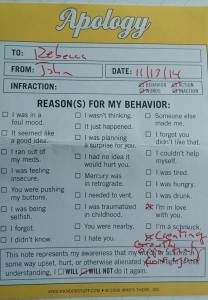 This is my first “Apology Form” to Rebecca and I checked “Other” for the reason for bad behavior –and wrote I was merely “creating a growth opportunity” for Rebecca.
Rebecca appreciated the effort and felt like it was “a start.”
And asked if I got several pads of Apology Forms for the future.…
Rebecca also noted I put down the wrong date (11/13). I told her I would fill out a new form with the correct date and to just hold on to this one for me to use in mid-November.
By Josh Bowen, on Thu Sep 25, 2014 at 8:30 AM ET 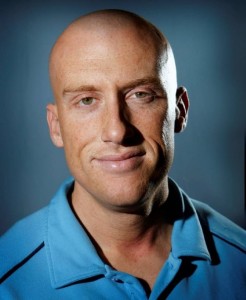 Cancer is real and serious concern for us all. The following blog is dedicated to Beth, who bravely battled breast cancer for 14 years, Claude Bowen, Sr who passed away in December from prostate cancer and the many other who have fought cancer head on and never gave up the fight. This is for you. Cancer is real and serious concern for us all. The following blog is dedicated to Beth, who bravely battled breast cancer for 14 years, Claude Bowen, Sr who passed away in December from prostate cancer and the many other who have fought cancer head on and never gave up the fight. This is for you.
Cancer
A word that strikes utter fear in people. And with good reason. As you see below the statistics are staggering. Every year, cancer becomes more and more prominent. In comes in all faces and types, packaged differently to wreak havoc on the human body. This post is not so much about the stats or what causes cancer but what can we do to prevent or slow the progress of this problem. This post is not to show you how smart or not smart I am as it relates to the disease. This about my grandfather, who was 88 years old and is put up the fight of his life against several types of cancer. Over the course of several months, I have saw the personal struggle he went under and the downward spiral of an independent country boy. It took hold of him and it didn’t let go. It is tough to watch but it shows how tough he was to continue to put up a fight against insurmountable odds.
This is also about my beliefs. Something that I often catch strange looks for and snide remarks about. However, I firmly believe in my heart of hearts that all things are possible through fitness. It is our fountain of youth, protector of disease and an absolute must for the human body. My motto is all things through fitness, it is the name of my website and is etched on my skin. I believe it because I have seen it.
I have seen people overcome disease, fight obesity and win, improve their personal lives and overall become better people. Fighting cancer is no different. Fitness plays an important part in the fight with all forms of cancer. Check these statistics from the National Cancer Institute:
Colon Cancer- Many studies in the United States and around the world have consistently found that adults who increase their physical activity, either in intensity, duration, or frequency, can reduce their risk of developing colon cancer by 30 to 40 percent relative to those who are sedentary regardless of body mass index (BMI), with the greatest risk reduction seen among those who are most active.
Breast Cancer-Most studies indicate that physically active women have a lower risk of developing breast cancer than inactive women; however, the amount of risk reduction achieved through physical activity varies widely (between 20 to 80 percent)
Endometrial Cancer-
About 20 studies have examined the role of physical activity on endometrial cancer risk. The results suggest an inverse relationship between physical activity and endometrial cancer incidence. These studies suggest that women who are physically active have a 20 percent to 40 percent reduced risk of endometrial cancer, with the greatest reduction in risk among those with the highest levels of physical activity. Risk does not appear to vary by age.
Lung Cancer- At least 21 studies have examined the impact of physical activity on the risk of lung cancer. Overall, these studies suggest an inverse association between physical activity and lung cancer risk, with the most physically active individuals experiencing about a 20 percent reduction in risk.
As you can see fitness can dramatically changed the diagnosis and prognosis of cancer. Think about what the statistics would be on people who exercised regularly who got cancer. I stand behind my belief that all things are possible through fitness, fighting cancer is not an exception to that rule. Regardless of activity level cancer affects us all. Our loved ones and even ourselves will be faced with this disease. The struggle and the will to live is the most important.
Through fitness you can fight and win. For those struggling with the disease, continue to fight and never give in. The spirit to beat it and the mindset is all you need. Keep fighting!
Yours in fitness,
JB
Selected References
National Center for Chronic Disease Prevention and Health Promotion and Centers for Disease Control and Prevention (1996). Physical Activity and Health: A Report of the Surgeon General. Retrieved June 26, 2009, from: http://www.cdc.gov/nccdphp/sgr/sgr.htm.
National Center for Chronic Disease Prevention and Health Promotion and Centers for Disease Control and Prevention (2008). Preventing Obesity and Chronic Diseases Through Good Nutrition and Physical Activity. Retrieved June 26, 2009, from: http://www.cdc.gov/nccdphp/publications/factsheets/Prevention/obesity.htm.
Slattery, ML. Physical activity and colorectal cancer. Sports Medicine 2004; 34(4): 239–252.
IARC Handbooks of Cancer Prevention. Weight Control and Physical Activity. Vol. 6. 2002.
Ballard-Barbash R, Friedenreich C, Slattery M, Thune L. Obesity and body composition. In: Schottenfeld D, Fraumeni JF, editors. Cancer Epidemiology and Prevention. 3rd ed. New York: Oxford University Press, 2006.
Lee I, Oguma Y. Physical activity. In: Schottenfeld D, Fraumeni JF, editors. Cancer Epidemiology and Prevention. 3rd ed. New York: Oxford University Press, 2006.
McTiernan A, editor. Cancer Prevention and Management Through Exercise and Weight Control. Boca Raton: Taylor & Francis Group, LLC, 2006.
Tardon A, Lee WJ, Delgado-Rodriguez M, et al. Leisure-time physical activity and lung cancer: A meta-analysis. Cancer Causes and Control 2005; 16(4):389–397.
Giovannucci EL, Liu Y, Leitzmann MF, Stampfer MJ, Willett WC. A prospective study of physical activity and incident and fatal prostate cancer. Archives of Internal Medicine 2005; 165(9):1005–1010.
Holmes MD, Chen WY, Feskanich D, Kroenke CH, Colditz GA. Physical activity and survival after breast cancer diagnosis. Journal of the American Medical Association 2005; 293(20):2479–2486.
Pinto BM, Frierson GM, Rabin C, Trunzo JJ, Marcus BH. Home-based physical activity intervention for breast cancer patients. Journal of Clinical Oncology 2005; 23(15): 3577–3587.
Meyerhardt JA, Giovannucci EL, Holmes MD, et al. Physical activity and survival after colorectal cancer diagnosis. Journal of Clinical Oncology 2006; 24(22):3527–3534.
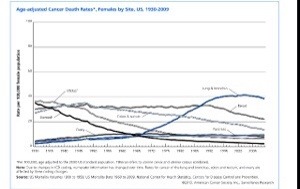
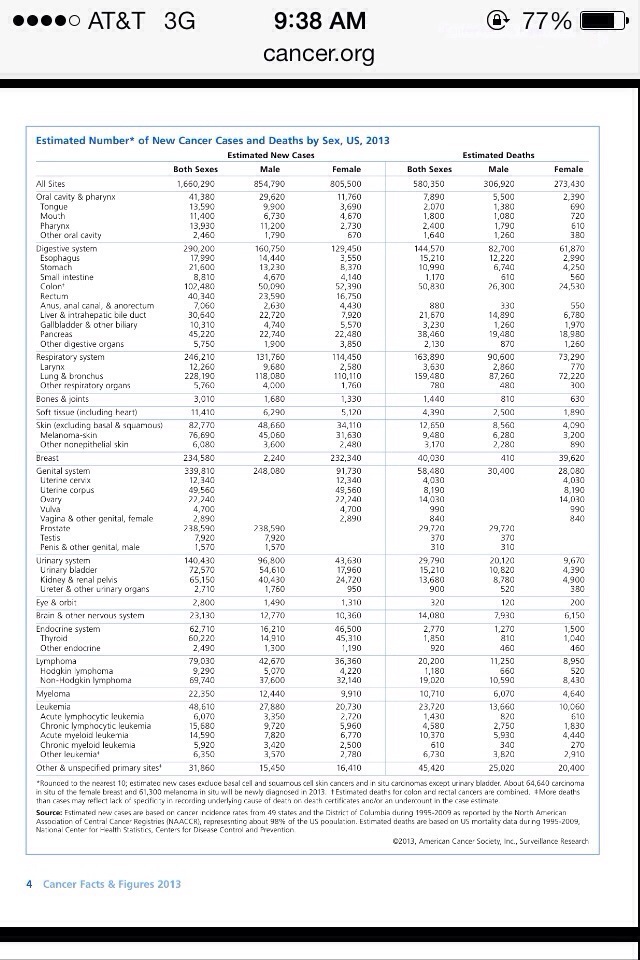
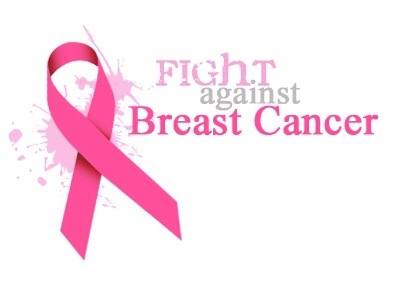
|
The Recovering Politician Bookstore
|
 Tonight for the first time in my life –and at the considerable age of 51 — I bought and used “Product.”
Tonight for the first time in my life –and at the considerable age of 51 — I bought and used “Product.”


















